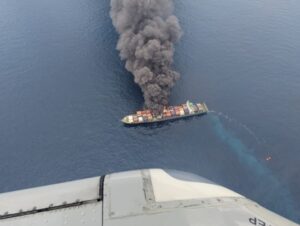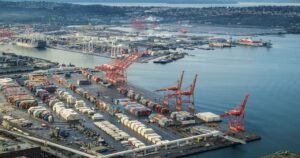We have already covered 5G, electronic bills of lading and cybersecurity as some of our top technology trends for the ports and terminals industry. There are of course more to discuss and here we are looking at some of the biggest developing technologies.
We know debates around automation, standards and cloud technologies have been ongoing for a number of years now but here is what we think is the current state of play and what’s next on the agenda.
Automation
We all know automation is not a new concept for the ports and terminals industry with many ports having already implemented sophisticated automated equipment and processes.
However, we also know that the events of 2020 and the pressure COVID-19 has put on terminals across the globe has made the appetite for automated capabilities grow.
Younus Aftab, CTO, Navis, said, “Every challenge presents new opportunity” during PTI’s Container Terminal Automation Conference (CTAC) 2020. Aftab pointed out that there is still an overwhelming desire to automate and invest, despite the challenges of the year.
It is not just automation, it is also key to consider how technologies like artificial intelligence (AI) can make automation more resilient. AIDrivers CEO and founder, Dr Rafiq Swash, noted that there is a need more resilient automation and AI can be used to develop a self-aware system which will provide much better proactivity to make the jump forward to the next level needed for future ports.
Also, it is notable that ZPMC, the largest crane and equipment manufacturer in the industry, has said that the pandemic has made the industry “better understand” the value of new technologies and that automated terminals have demonstrated their resiliency during 2020.
A shift in acceptance of automation has certainly occurred throughout 2020 and it will pave the way for the accelerated adoption of automated technologies, and the technology that can be used to enhance and support it.
Standards
How to standardise within the ports and terminals industry is by no means a new point of contention but we are seeing industry-wide efforts across both shipping and terminals taking place.
The Digital Container Shipping Association (DCSA) continues to roll our standards for Just-in-Time (JIT) port calls, electronic Bills of Lading, Internet of Things (IoT) and container operations. All of these standard releases have occurred in 2020 alone, the pace has been picked up and is now truly industry-wide given the DCSA’s membership of seven leading shipping lines.
Meanwhile, on the terminal side the Terminal Industry Committee (TIC 4.0) was formally registered during a ceremony in Brussels, Belgium, in January 2020.
TIC 4.0 brings together leading terminal operators, equipment manufacturers and solutions providers to promote, define and adopt standards.
Speaking during CTAC 2020, Boris Wenzel, Managing Director, Terminal Link, noted that while the DCSA is solely concerned with the shipping standards the two are working together to work on standards with the interfaces that the shipping lines use.
“You must have credible associations forming up for the big blocks and then these blocks have to talk to each other to bring about standards covering the entire supply chain,” Wenzel pointed out.
With two of these big blocks now firmly established in 2020 we should see more standards being rolled out and industry acceptance becoming more apparent.
Cloud technology
Demand for cloud technology at ports is on the rise, according to a recent Navis customer survey and the pandemic has shown many that there is a need to be able to change to survive and the cloud provides this opportunity for change.
Essentially, the cloud is an IT concept that allows for on-demand availability of system resources, especially data, to multiple users
Speaking to PTI in early 2020, Andy Barrons, Chief Strategy Officer, Navis, said that there has been change over the last couple of years in terms of moving some systems to the cloud, which have typically been administrative systems, but now there is a real demand for the terminal operating system (TOS) to move in the same direction.
Others have also noted the future is in the cloud and Harry Nguyen, CEO, RBS spoke to PTI about the value of a cloud based terminal operating system in an article in August 2020.
Speaking about the evolution of digitalisation Nguyen said, “The maritime and container industry, formerly known to be a traditional industry, will start to emerge from their conventional approaches and expand into automation, the cloud, and AI.”
Proponents of cloud-based system say that in comparison to their on-premises counterparts they are more efficient in communications both within and between ports, allow for cost saving through low maintenance cost and operational efficiency, and are highly scalable in line with the IT resources that match a port’s needs.
Read part one of our top port and terminal tech trends for 2021 here.








